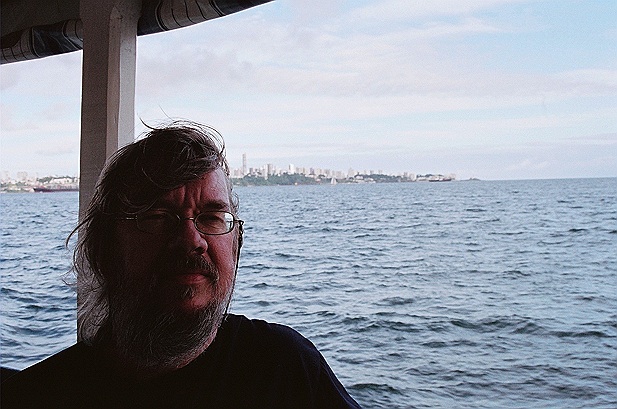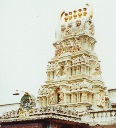 |
Travel |
| home | photos | travel | theatre | translations | computer | interests | contact |
 the Gate to India (Mumbai)  Fire temple (Zoroastrism)  Hindu temple (Mysore)  another Hindu temple  onions in the market |
IndiaIn 1994, a friend at the theatre talked about going to India. Finally, we were a party of four that set out to Mumbai (Bombay) via Rome. We acclimatised in Mumbai for a few days, visited Elephanta island with its huge temple carved out of the 'living' rock. Then we booked a busride to Ellora to see a collection of ancient caves dedicated to Hindu and Buddhist worship. One of the sanctuaries there is a reproduction of the famous Kailash site. After Ellora, we were a bit at a loss about how to proceed. We decided to travel to a train junction and from there pick a southbound train. From Bangalore, the hightech centre of India, we went to the beautiful city of Mysore. A brahman tuktuk driver took the four of us on tours through the surroundings: the Jain temple at Sravanabelagola with the enormous monolith statue of Gomateshvara, the Channekeshava temple in Belur, the Hoysalesvara temple in Halebid. We stayed in an old colonial mansion at the outskirts of town. The monsoon had struck early and hard: we passed an inundated temple and an inaccessible nature resort. We saw beautiful ciselled sculptures in an ancient temple, at a few metres from a muddy street where people tried to stay alive. India is always a culture shock, and confronts you with poverty at every corner, unless you book a desinfected dehumanised tour that only shows you Taj Mahal and some other palaces that have been emptied out before you arrive. We took another train to Trivandrum in Kerala, and spent a restful two weeks at the beach in Kovalam at the far south. It wasn't yet the decadent rip-off it must be nowadays... At the beach, I had my favourite pineapple peddler: everyday we were there, she prepared me a juicy pineapple, hacking away the skin with a sharp machete. She didn't let any other pineapple vendor near me! At walking distance, there was a fishermen's village, Vizhinjam, with a pink mosque and several early (Syrian) christian churches. It is said that globetrotter apostle Paul passed here and founded the first churches around Kerala. We also visited a performance of the Kathakalí✶ 'stage play': we saw how the actors prepared for the performance, putting on a thick coat of make-up and an elaborate costume, followed by a short part of a play (that normally takes many hours). Before our return to Mumbai, we made a boat trip through the Backwaters, also inundated by the monsoon. It is a system of lakes and waterways in the land of 'a million palm trees'. The flight back to Mumbai took less that 2 hours, the scheduled time for the train trip is 48 hours. Moreover, all these transindian express trains accumulate so much delays that they never get at their destination anywhere about the scheduled time. The train system of India was built a century ago by the English, all single track, and is now -by lack of serious modernisation investment- breaking out at the seams because of the masses of people that need to make use of it. Imagine you're standing quietly at your platform, not too many people waiting around you. At the moment the train enters the station, you become aware of a mass of people on the other side, like a stream of ants, getting ready to board the train from the wrong side. Inside, you don't need a seat, you're kept upright by your fellow travellers... The same goes for bus transport. If some Indians have kept the very British habit of queuing at the bus stop, the ordinary way is the 'struggle for transport' and the 'entry of the fittest'. next travel page |
| home | photos | travel | theatre | translations | computer | interests | contact |